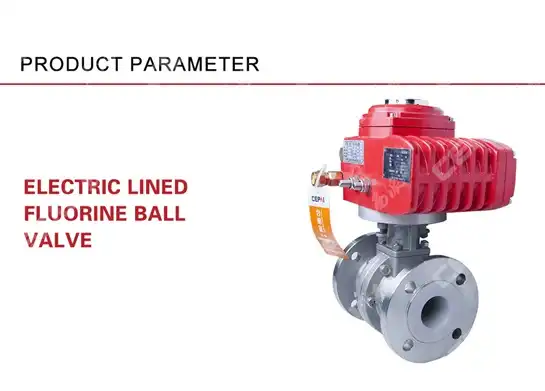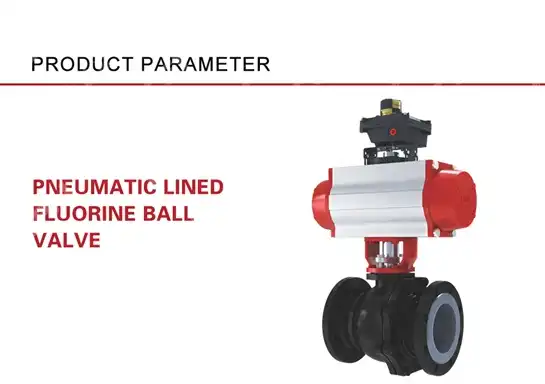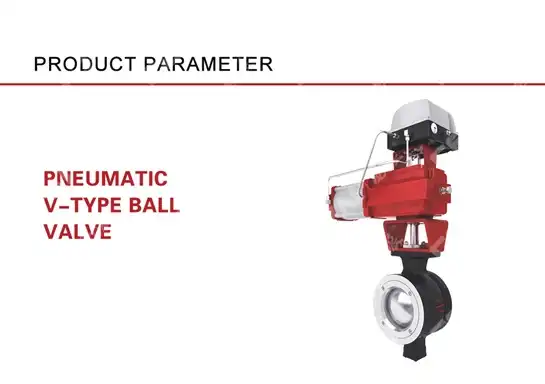Explosion-Proof Ball Valves: Ensuring Safety in Hazardous Environments
Industrial accidents caused by ignition in explosive atmospheres have claimed countless lives and caused billions in property damage across the petrochemical, oil and gas, and mining industries. When flammable gases, vapors, or combustible dust are present, standard valve equipment becomes a potential ignition source that could trigger catastrophic explosions. This critical safety challenge demands specialized solutions that can operate reliably without compromising worker safety or facility integrity. Explosion-Proof Ball Valves represent the definitive answer to this challenge, engineered with robust safety features and certified protection systems that prevent internal sparks from reaching hazardous external environments. These advanced control systems combine precision flow control with explosion-containment technology, ensuring your operations maintain peak performance while protecting personnel and assets from potentially devastating incidents.

Understanding Explosion-Proof Ball Valve Technology and Safety Standards
The fundamental principle behind explosion-proof ball valve technology lies in containment rather than prevention of internal ignition. These valves must be ATEX-certified to ensure they meet safety standards for preventing ignition in explosive environments, demonstrating compliance with rigorous international safety protocols. Unlike conventional valves, explosion-proof ball valves feature specially designed enclosures that can withstand internal explosions and prevent the transmission of flames, sparks, or hot gases to the surrounding hazardous atmosphere. The construction methodology of these safety-critical components involves multiple layers of protection, beginning with flame-proof enclosures manufactured from high-grade materials capable of containing explosive pressures. The ball valve mechanism itself operates within a sealed chamber that maintains structural integrity even under extreme conditions, while specialized sealing systems prevent any internal combustion from escaping to external environments. This containment approach ensures that even if ignition occurs within the valve assembly, the explosion remains isolated and cannot propagate to surrounding flammable materials.
-
Certification Categories and Compliance Standards
Modern explosion-proof ball valves undergo extensive testing and certification processes to meet international safety standards including ATEX, UL, and IECEx requirements. ATEX classifies equipment into different categories based on the risk of exposure to explosive atmospheres, with Category 1 equipment designed for continuous operation in hazardous zones and Category 2 equipment suitable for normal industrial applications where explosive atmospheres may occur occasionally. These classification systems ensure that operators can select appropriate valve technology based on their specific risk assessment and operational requirements. The certification process involves rigorous testing protocols that evaluate flame propagation resistance, enclosure strength, surface temperature limitations, and electrical safety characteristics. Each explosion-proof ball valve must demonstrate its ability to contain internal explosions while maintaining operational functionality under varying temperature, pressure, and chemical exposure conditions. This comprehensive testing ensures that certified equipment provides reliable protection across diverse industrial applications and environmental conditions.
Critical Applications and Industry Requirements
Explosion-proof actuator valves are designed for use in hazardous environments where there is a risk of explosions due to flammable gases, vapors, or dust, making them indispensable in numerous high-risk industrial sectors. The petrochemical industry relies heavily on these specialized valves for controlling process flows in refineries, chemical processing plants, and storage facilities where hydrocarbon vapors create persistent explosion hazards. Oil and gas operations, from wellhead control to pipeline distribution systems, depend on explosion-proof ball valves to maintain safe operations while handling volatile petroleum products. Mining operations present unique challenges where combustible dust and methane gas create complex explosion risks that require specialized valve solutions. Power generation facilities, particularly those utilizing natural gas or biomass fuels, integrate explosion-proof ball valves into their safety systems to prevent ignition incidents that could compromise entire generation units. Water treatment plants processing industrial wastewater often encounter flammable vapors that necessitate explosion-proof equipment throughout their treatment processes.
-
Performance Requirements in Extreme Conditions
The demanding operational environments where explosion-proof ball valves operate require exceptional performance characteristics that exceed standard industrial valve specifications. These valves must maintain precise flow control while operating in temperature extremes ranging from arctic conditions to high-temperature process applications exceeding 400°C. Pressure ratings often extend beyond 1000 PSI, requiring robust construction materials and precision manufacturing techniques that ensure long-term reliability under extreme mechanical stress. Corrosion resistance becomes particularly critical in chemical processing applications where aggressive media can rapidly degrade standard materials. Explosion-proof ball valves incorporate specialized alloys, advanced coating systems, and engineered seal materials that provide extended service life even when exposed to highly corrosive process fluids. The combination of chemical resistance and explosion protection creates unique engineering challenges that require careful material selection and innovative design approaches.
Advanced Safety Features and Protection Mechanisms
Modern explosion-proof ball valve systems incorporate multiple redundant safety features that provide comprehensive protection against ignition risks. These valves are equipped with actuators housed in explosion-proof enclosures that prevent sparks or heat from igniting the surrounding atmosphere, ensuring that all electrical components remain safely isolated from hazardous environments. The actuator housing design utilizes flame-path technology that allows normal operation while preventing flame transmission through mechanical interfaces. Temperature monitoring systems integrated into advanced explosion-proof ball valves provide real-time surveillance of surface temperatures, automatically triggering shutdown sequences if thermal conditions approach dangerous levels. Pressure relief mechanisms protect against over-pressurization scenarios that could compromise containment integrity, while advanced sealing systems maintain explosion-proof ratings throughout extended operational periods. Emergency shutdown capabilities enable rapid isolation of process systems when hazardous conditions are detected.
-
Intelligent Monitoring and Control Systems
Contemporary explosion-proof ball valve installations often incorporate intelligent monitoring systems that provide continuous assessment of operational parameters and safety conditions. These systems utilize explosion-proof sensors and communication interfaces to transmit critical data to central control systems without compromising area classification requirements. Predictive maintenance algorithms analyze valve performance trends, identifying potential issues before they can compromise safety or operational efficiency. Remote diagnostic capabilities allow maintenance teams to assess valve condition and perform troubleshooting procedures without entering hazardous areas, significantly reducing personnel exposure risks. Advanced control systems can automatically adjust valve positions based on process conditions while maintaining strict adherence to safety protocols, optimizing both performance and protection. These intelligent features represent the evolution of explosion-proof technology toward fully integrated safety and control solutions.
Material Selection and Construction Excellence
The selection of appropriate materials for explosion-proof ball valve construction requires careful consideration of multiple factors including chemical compatibility, mechanical strength, and thermal characteristics. Stainless steel grades such as 316L provide excellent corrosion resistance and mechanical properties suitable for most industrial applications, while specialized alloys like Hastelloy or Inconel may be required for extremely aggressive chemical environments. The ball and stem components utilize precision-machined materials that maintain dimensional stability under varying thermal and pressure conditions. Sealing systems represent critical components that must provide reliable containment while accommodating thermal expansion and mechanical wear. Advanced elastomer compounds and PTFE-based seals offer superior chemical resistance and temperature stability, ensuring long-term sealing integrity in challenging applications. Metal-seated designs provide enhanced durability for high-temperature applications where polymer seals cannot maintain effectiveness.
-
Manufacturing Precision and Quality Control
The manufacturing process for explosion-proof ball valves demands exceptional precision and rigorous quality control measures that exceed standard industrial valve production requirements. Computer-controlled machining centers ensure dimensional accuracy within tight tolerances, while specialized welding techniques create strong, leak-proof joints that maintain structural integrity under explosive pressures. Each valve assembly undergoes comprehensive testing including hydrostatic pressure testing, helium leak detection, and explosive atmosphere simulation to verify compliance with safety standards. Quality control protocols involve detailed material traceability, dimensional verification, and performance testing that documents each valve's compliance with specification requirements. Third-party certification organizations conduct independent audits and testing to validate manufacturing processes and ensure consistent product quality. This comprehensive approach to manufacturing excellence provides the reliability and safety performance that demanding industrial applications require.

Installation, Maintenance, and Operational Best Practices
Proper installation of explosion-proof ball valves requires specialized knowledge and strict adherence to area classification requirements and manufacturer specifications. Installation personnel must possess appropriate certifications and training in hazardous area work practices, ensuring that all installation procedures maintain the explosion-proof integrity of the valve system. Proper grounding, conduit sealing, and electrical connections are critical elements that must be executed according to applicable electrical codes and safety standards. Maintenance protocols for explosion-proof ball valves involve specialized procedures that preserve the explosion-proof characteristics while ensuring optimal operational performance. Routine inspection schedules must include verification of enclosure integrity, seal condition, and electrical connection security. Maintenance personnel require specialized training in explosion-proof equipment servicing, including proper procedures for opening enclosures in hazardous areas and maintaining certification compliance throughout the equipment lifecycle.
-
Operational Optimization and Performance Monitoring
Effective operation of explosion-proof ball valve systems requires comprehensive understanding of process requirements and safety limitations that govern their application. Operating procedures must account for the additional safety considerations inherent in explosion-proof equipment while maximizing process efficiency and reliability. Regular performance monitoring helps identify optimization opportunities while maintaining strict compliance with safety requirements. Training programs for operations personnel should emphasize both the safety aspects and operational characteristics of explosion-proof ball valves, ensuring that operators understand proper procedures for normal operation, emergency response, and maintenance support. Documentation of operational parameters and maintenance activities provides valuable data for optimizing performance and ensuring regulatory compliance throughout the valve's service life.
Conclusion
Explosion-proof ball valves represent essential safety equipment that enables safe operation in hazardous industrial environments while maintaining precise flow control capabilities. These specialized valves combine advanced safety features with robust construction to provide reliable protection against ignition risks in petrochemical, oil and gas, mining, and other high-risk applications. The comprehensive certification processes and rigorous manufacturing standards ensure that explosion-proof ball valves deliver consistent safety performance while meeting demanding operational requirements across diverse industrial sectors.
Cooperate with CEPAI Group Co., LTD.
CEPAI Group Co., Ltd. stands as a leading China Explosion-Proof Ball Valve manufacturer and trusted China Explosion-Proof Ball Valve supplier, offering comprehensive solutions for hazardous environment applications. Established in 2009 with 200 million yuan registered capital and spanning 56,000 square meters of advanced manufacturing facilities, CEPAI has earned recognition as a national high-tech enterprise and specialized small giant company. Our explosion-proof ball valves feature High Quality Explosion-Proof Ball Valve construction with competitive Explosion-Proof Ball Valve prices, making CEPAI your preferred China Explosion-Proof Ball Valve factory for reliable protection solutions.
As a certified China Explosion-Proof Ball Valve wholesale provider, we offer comprehensive Explosion-Proof Ball Valve for sale with full API, ISO, and CE certifications. Our intelligent manufacturing capabilities, including the Asia Pacific region's longest high-precision production line, ensure exceptional quality and delivery performance. Major clients including PetroChina, Sinopec, and CNOOC trust CEPAI's explosion-proof valve solutions for their critical safety applications. Contact us at cepai@cepai.com for expert consultation and customized solutions that protect your operations while optimizing performance and reliability.
FAQ
Q: What certifications are required for explosion-proof ball valves in hazardous areas?
A: Explosion-proof ball valves must obtain ATEX, UL Class I Division 1, IECEx, or equivalent certifications based on regional requirements and specific hazardous area classifications.
Q: How do explosion-proof ball valves differ from standard ball valves?
A: Explosion-proof ball valves feature specialized enclosures that contain internal explosions, flame-proof construction materials, and certified electrical components that prevent ignition of external hazardous atmospheres.
Q: What maintenance procedures are required for explosion-proof ball valves?
A: Maintenance requires certified personnel following manufacturer procedures, including enclosure integrity verification, seal inspection, electrical connection testing, and compliance documentation.
Q: Which industries commonly use explosion-proof ball valves?
A: Primary applications include petrochemical processing, oil and gas operations, mining facilities, power generation plants, chemical manufacturing, and water treatment facilities handling flammable materials.
References
1. National Institute for Occupational Safety and Health. "Criteria for a Recommended Standard: Working in Confined Spaces." NIOSH Publication No. 80-106. Department of Health and Human Services.
2. International Electrotechnical Commission. "Explosive Atmospheres - Part 1: Equipment Protection by Flameproof Enclosures 'd'." IEC 60079-1:2014 Standard. Geneva: IEC Publications.
3. American Petroleum Institute. "Specification for Pipeline Valves." API Specification 6D, Fifth Edition. Washington, DC: American Petroleum Institute.
4. Factory Mutual Research Corporation. "Approval Standard for Explosion-Proof Electrical Equipment." FM Class Number 3615. Norwood, MA: Factory Mutual Research Corporation.
_1746598568348.webp)
Get professional pre-sales technical consultation and valve selection services, customized solution services.

About CEPAI


